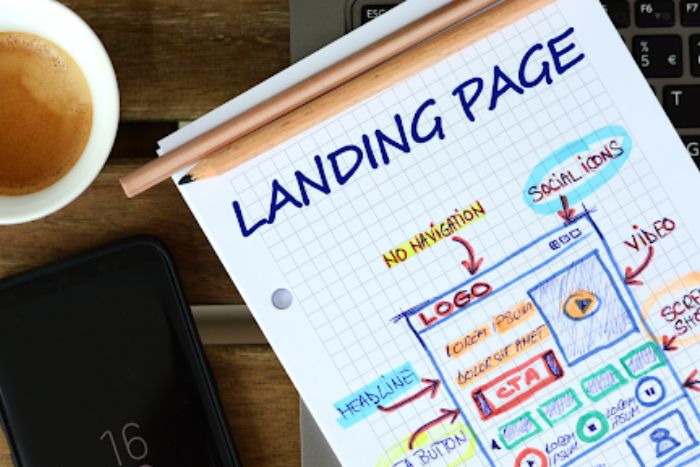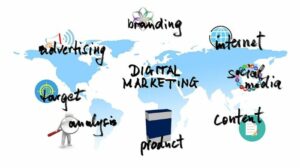Landing pages are often the frontlines of your online business, and as such, they’re essential for success. It’s important to create an engaging landing page that encourages visitors to take the action you’d like them to, whether that’s signing up for a newsletter, downloading a free guide, or making a purchase. Creating an effective landing page is a complex tactic, but it doesn’t have to be hard. With the right tips and strategies, you can create a strong landing page that not only looks great but also converts. In this article, we’ll take a look at the best tips and strategies to help you create engaging and successful landing pages that convert.
What is a landing page?
A landing page, by definition, is a page that a user “lands” on after clicking a link or advertisement that leads them to that page. The landing page is designed for a specific purpose, like to sell a product, generate leads, or promote an offer. Landing pages are an online marketing strategy that allows you to direct and manage your traffic. They’re meant to be specific and targeted so that potential customers will have a clear idea of what they’re getting when they click on your link. To create a landing page, you’ll want to start with a template. Landing pages are typically less robust than the rest of your website pages, so it’s a good idea to start with a template that doesn’t require a lot of customization. You can then add in the elements that make the page specific to your campaign.
Why are landing pages important?
Landing pages are an essential part of any online marketing strategy. They can help you increase your conversion rate, help you identify what might be causing you to lose potential customers, and provide valuable information regarding how people engage with your content. They can also help you understand what potential customers want. Landing pages are excellent sources of information, since they are focused and have a very specific purpose. Landing pages are important because they give you the information you need to improve your online marketing strategy. They can help you determine what’s causing people to abandon their shopping cart, what might be causing people to click away without signing up, and what might be causing people to leave without clicking on your links. They can also help you discover what your audience wants and how they engage with your content.
Types of landing pages
There are many different types of landing pages, each designed for different goals. Here are just a few of the most common types of landing pages:
- Lead generation: Lead generation landing pages are designed to get people to sign up for your email list or give you some type of contact information, like their name and email address.
- Sales: Sales landing pages are designed to help you make sales. They’re generally focused on one product or service.
- Product or service: Product or service landing pages can be used in conjunction with sales landing pages or on their own. They’re designed to provide information about a specific product or service.
- Squeeze pages: Squeeze pages are designed to get information out of your visitors and make them take action. They’re often used to get people to sign up for an email list or give you their contact information.
Key elements of a successful landing page
All successful landing pages have a few key elements in common. They have an attention-grabbing headline, an actionable and clickable call to action, strong visual elements, and detailed information about the product or service. This is of course just an overview. For each of these elements, there are specific things you can do to make them more effective. Here are a few examples:
- Headline: Your headline should be attention-grabbing and relevant to the rest of your landing page. It should make your potential customers want to click on your link and read more. If your headline isn’t compelling, you’ll lose a lot of people who might otherwise be interested in your content.
- Call to action: Your call to action should be clear and easy to understand. You want a visitor to your landing page to know exactly what they should do next. If you want them to sign up for your email list, for example, make sure your call to action clearly says “sign up for our newsletter.” Don’t make them try to figure out what you want from them.
- Visuals: Your visuals can come in many forms. They can be images, graphs, charts, or visual representations of information. They can also take the form of videos. Whatever visuals you decide to use, they should be relevant to your landing page and help to support the information you’re providing.
- Content: Content is the foundation of any landing page. Without strong, relevant content, your landing page won’t be effective. Make sure your landing page contains all the information visitors need to know and want to know.
Tips for creating engaging landing pages
- Be clear about your goal: Before you begin creating your landing page, make sure you know exactly what you want your visitors to do when they get there. This will help you create a landing page that speaks to your visitors and gets them to take the action you want them to take.
- Be specific about what you offer: Your landing page should give your visitors all the information they need to make an informed decision about what you’re offering. Don’t make them click away from the landing page and search around your website to find the information they’re looking for. Include the information they need to make a decision right on your landing page.
- Keep your landing page short and to the point: Your landing page is likely very different from the rest of your website. It’s designed to be specific and targeted, so don’t build a landing page that’s full of fluff and unnecessary information. Keep it short and to the point, and you’ll keep your visitors interested and engaged.
- Keep your landing page design consistent with your brand: Your landing page will likely look different than the rest of your website, but that doesn’t mean you have to completely change your design. Make sure your landing page uses consistent imagery, fonts, and colors with the rest of your website so that it fits in with your branding.
Designing your landing page
When designing your landing page, you can choose between two different options: building a new landing page from scratch or using an existing page on your website. If you choose to build a new landing page, make sure your design is consistent with your branding, and that it’s easy to navigate. You also want to make sure your landing page loads quickly. If you decide to use an existing page on your website, make sure that it is consistent with your branding and easy to navigate. You’ll also want to make sure it loads quickly and that it’s designed for the purpose of your specific landing page. You can make your landing page more engaging by adding images, graphs, and charts. You can also include video and audio, but make sure it’s relevant and useful. You can also use tools like live chat or interactive polls to make your landing page feel more engaging and invite your visitors to engage further.
Writing effective copy for your landing page
Your landing page copy is what your visitors see before clicking on your link. It’s one of the first things they read, and it can greatly impact whether they click on your link or click away without reading anything else on the page. When writing your landing page copy, keep the following tips in mind:
- Be clear and concise: Your landing page visitors don’t have a lot of time or patience, so don’t make them try to figure out what you’re offering. Make sure your copy is clear and concise, and easy for your visitors to understand.
- Be straightforward: Your visitors don’t want to read fluffy marketing copy designed to sell them on your product or service. They want to know exactly what you have to offer and how they can get it. Be straightforward in your landing page copy, and you’ll save yourself a lot of time and hassle.
- Be inviting: Your landing page copy isn’t just there to inform your visitors and get them to click on your link. It’s also there to invite them to learn more about what you have to offer. Make sure your copy is inviting and helpful.




